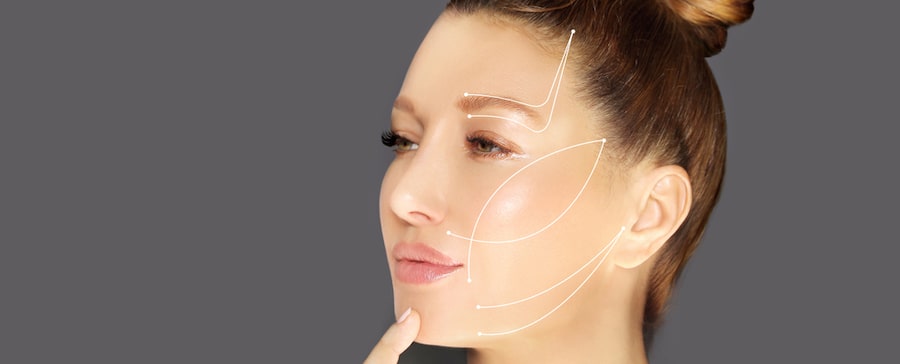
With every year we age, our body produces less collagen, a vital protein that supports the structure and buoyancy of the skin. As a result, the skin starts to show the signs of aging by becoming thinner and looser, making wrinkles more visible and sagging skin more obvious.
To combat the signs of aging, cosmetic doctors and dermatologist are taking a two-step approach by addressing sagging skin and stimulating collagen production with thread lifting. Thread lift, a non-surgical procedure that tightens skin and helps the body to produce collagen beneath the skin’s surface to fill out fine lines and wrinkles.
A comprehensive treatment that addresses both the outer and inner layers of the skin without having surgery is pretty impressive, right?
We share all there is to know about thread lifting and what to expect from the procedure compared to surgical options like a facelift. Let’s start with the essential question- what is thread lifting?
Thread lifting, also known as a Thread Lift, is a minimally invasive cosmetic procedure that involves inserting a medical-grade thread into specific areas of the face to lift and slightly pull up the skin, creating a smooth and even surface. The thread is made of a dissolving material that will eventually absorb into the body.
Thread lifting works in two ways to prevent skin from sagging:
Thread lifting can help address skin laxity and wrinkles in the following facial areas:
Thread lifting can also be performed on other body parts, such as breasts, buttocks, knees, and elbows.
Want to learn more about a cosmetic procedure? Check out the procedure navigation tool to find descriptions and articles written by board-certified cosmetic doctors.
A thread lift takes place in a medical office and is considered a minimally invasive outpatient procedure.
The length of time for the treatment will vary from patient to patient, depending on how many areas are being treated but typically will take less than two hours to complete.
Here is a general step by step description of what to expect during a thread lift:
After the procedure, patients may experience redness and slight swelling around the injection sites but should dissipate after a few hours. A patient can continue with their normal activities for the rest of the day, except working out or exercising for the next 72 hours.
Patients are advised not to rub the treated areas, and when sleeping, the head should be propped upward to avoid laying on the newly inserted sutures.
A thread lift does not produce permanent results. However, the activation of collagen production can slow down the skin aging process. After two years, the threads will dissolve into the skin.
A thread lift is ideal for a person with some laxity of the skin and moderate wrinkles and lines. Thread lifting may not deliver optimal results for skin that have severe sagging and wrinkles; a surgical facelift may be more effective in this case.
A facelift involves surgically removing excess skin and the surgeon repositioning underlying muscle and tissue to tighten the skin. There are more risks involved with a facelift because it’s a surgical procedure that requires general anesthesia. With thread lifting, a patient is awake for the entire process- only getting local anesthesia at site insertions.
The downtime for a facelift is typically two weeks before resuming any normal activities. With a thread lift, a patient can participate in most activities right after the procedure, except for exercise, which a patient can typically resume after three days post-procedure.
A facelift will not stop the aging process but removing extra skin and repositioning the muscles and tissue delivers longer-lasting results than thread lifting. However, if you are not satisfied with the results of your facelift, the only way to fix it is with another surgery. Yet, with a thread lift, if you are not completely satisfied by the results, the threads will dissolve within two years, allowing the option to explore other skin-tightening procedures.
Skin that has started to show the signs of aging with sagging skin may need more support beyond the use of Botox or fillers. Thread lifting provides skin-tightening measures and helps improve future skin structure.
If you are interested in a thread lifting procedure, consult with a board-certified cosmetic surgeon experienced with performing thread lifts.
- VM